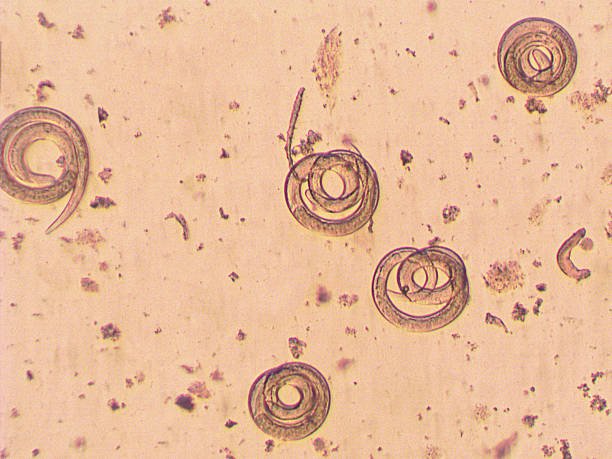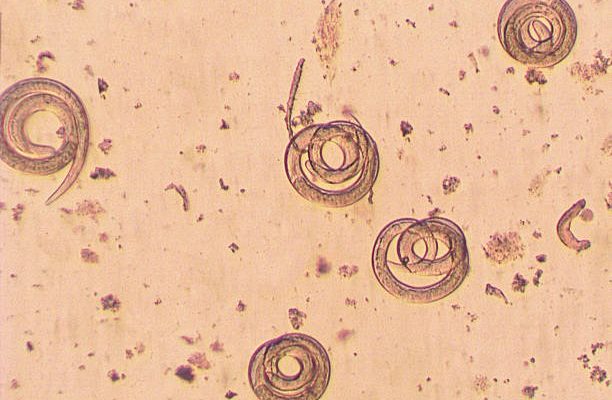
Think of *Trichinella spiralis* as a master of disguise. They first find a host (often a pig) where they can grow and breed. Once they mate, they launch a whole new generation into the world—each tiny egg packed with potential. So, grab a cup of coffee and let’s dive into the remarkable reproductive habits of *Trichinella spiralis*, from mating to the development of larvae.
What is Trichinella Spiralis?
*Trichinella spiralis* is a parasitic roundworm that can infect a variety of hosts, including humans. It typically resides in the intestines of its host, where it can mature, mate, and produce eggs. But it doesn’t stop there. The lifecycle of this worm is a complex journey! When the eggs hatch, they release larvae that can invade muscle tissues, which is how they spread throughout the body.
Here’s the thing: understanding how *Trichinella spiralis* reproduces helps us grasp why certain precautions are necessary when it comes to food safety and handling. While they’re small, their impact is significant, making it essential to know more about them.
How Do Trichinella Spiralis Mate?
Mating in the world of *Trichinella spiralis* is quite fascinating. After reaching sexual maturity in the intestines of the host, the male and female worms engage in a rather unique reproductive dance. The male worms are usually smaller and use their curved tails to grasp onto the females during mating.
This mating process forms a critical step in their life cycle. As the male latches onto the female, they can successfully transfer genetic material, which is vital for generating new life. This coupling can last for several hours, allowing the female to fertilize her eggs internally, preparing for the next stage of the cycle.
Egg Production and Release
Once mating occurs, the female *Trichinella spiralis* begins producing eggs. Here’s where it gets interesting: she can lay several hundred to a thousand eggs in her lifetime! This prolific egg production is essential for the survival of the species, especially considering the challenges presented by various environments.
Once the eggs are ready, they’re released into the host’s intestines. From there, they can hatch into larvae within the intestines themselves. This process doesn’t take long—typically a few days. The larvae then move through the intestinal wall into the bloodstream, where they can spread throughout the body.
What Happens to Larvae?
After hatching, the larvae present a tricky situation for the host. They may invade muscles and tissues, creating cysts that can persist for years. This stage is crucial for their survival, allowing them to wait for a new host to consume the infected meat.
The larvae can cause symptoms in the host as they migrate, such as muscle aches, fevers, and other flu-like symptoms. This is why understanding *Trichinella spiralis* and its life cycle is so important. By recognizing potential sources of infection, people can take preventive measures, such as cooking pork to safe temperatures to kill any larvae present.
Trichinella Spiralis Life Cycle
The life cycle of *Trichinella spiralis* is both simple and complex at the same time. Here’s a breakdown of the key stages:
1. Ingestion: A host (like a pig or a human) consumes undercooked meat containing encysted larvae.
2. Hatching: Once in the intestines, the larvae hatch from the eggs and mature into adult worms.
3. Mating: The male and female worms mate, leading to egg fertilization.
4. Eggs and Larvae: The female lays eggs that hatch into larvae, which migrate into the bloodstream and muscles.
5. Cyst Formation: Larvae encyst in muscle tissues, awaiting another host.
This life cycle showcases the adaptability and resilience of *Trichinella spiralis*—a testament to nature’s design. They have effectively evolved mechanisms to survive and thrive, despite the challenges they face.
Why Understanding Trichinella Matters
So, why should you care about *Trichinella spiralis* and its reproduction? Understanding this organism is key for anyone who handles food, especially meat. Food safety practices are essential to prevent infections. By knowing how *Trichinella* spreads, you’re better equipped to take necessary precautions, such as ensuring meat is cooked to safe temperatures, like 145°F (63°C) for whole cuts and 160°F (71°C) for ground meat.
This knowledge helps maintain a safer food supply and prevents health risks associated with undercooked meats. Plus, by spreading awareness, we can collectively reduce the cases of trichinosis and protect ourselves and others.
The reproductive cycle of *Trichinella spiralis* is a fascinating window into the world of parasites. From mating to larvae development, understanding their life cycle can significantly impact food safety and public health. By being informed, we can take proactive measures to ensure our meals are safe and free from these little invaders.
In the end, knowledge is power! Whether you’re a chef, a home cook, or just someone who enjoys eating pork, knowing how parasites like *Trichinella spiralis* operate can help you enjoy your food with peace of mind.

